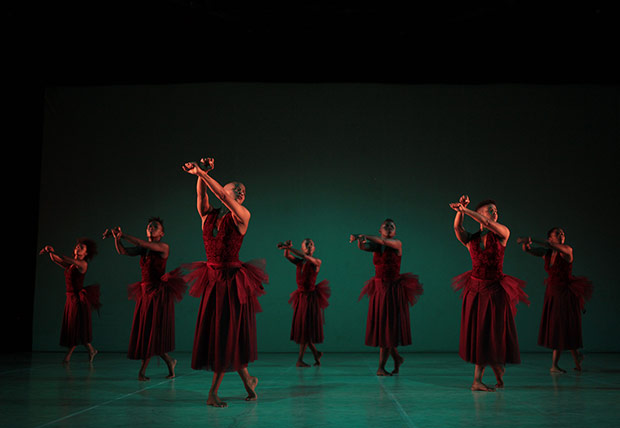
© John Hogg. (Click image for larger version)
Dada Masilo / The Dance Factory
Giselle
★★★✰✰
New York, Joyce Theater
5 April 2018
twitter.com/dadamasilo
www.joyce.org
The Unforgiven
It is easy to forget that violence is at the very heart of the 19th century ballet Giselle. The setting is peasant-pretty, and Romantic ballet technique may look quaint and gentle to our contemporary eye. But dancing on pointe was still a new thing in 1841, like a magic trick, evoking thoughts of ghosts and otherworldly spirits in the minds of European audiences. And there is no doubt that the Wilis, the spirits of betrayed women who welcome Giselle into their sisterhood in the ballet’s second act, are cold-blooded killers – as Hilarion’s next of kin will attest.
The South African choreographer Dada Masilo hasn’t forgotten about this violence; in fact it is the driving force behind her re-interpretation of Giselle, currently at the Joyce Theatre in New York. In her version, every aspect of the ballet is reinterpreted through the lens of this violence, including the relation between Giselle and her lover, Albrecht, whose depravity and betrayal lead to her madness and death.
Masilo’s is an uncompromising, ritualistic version of the story, with little room for redemption, and in its final scene, in which the spirits amass and advance upon Giselle’s seducer again and again, it tips over into a kind of animistic brutality more reminiscent of The Rite of Spring than of the Christian parables so beloved of the Romantic era.
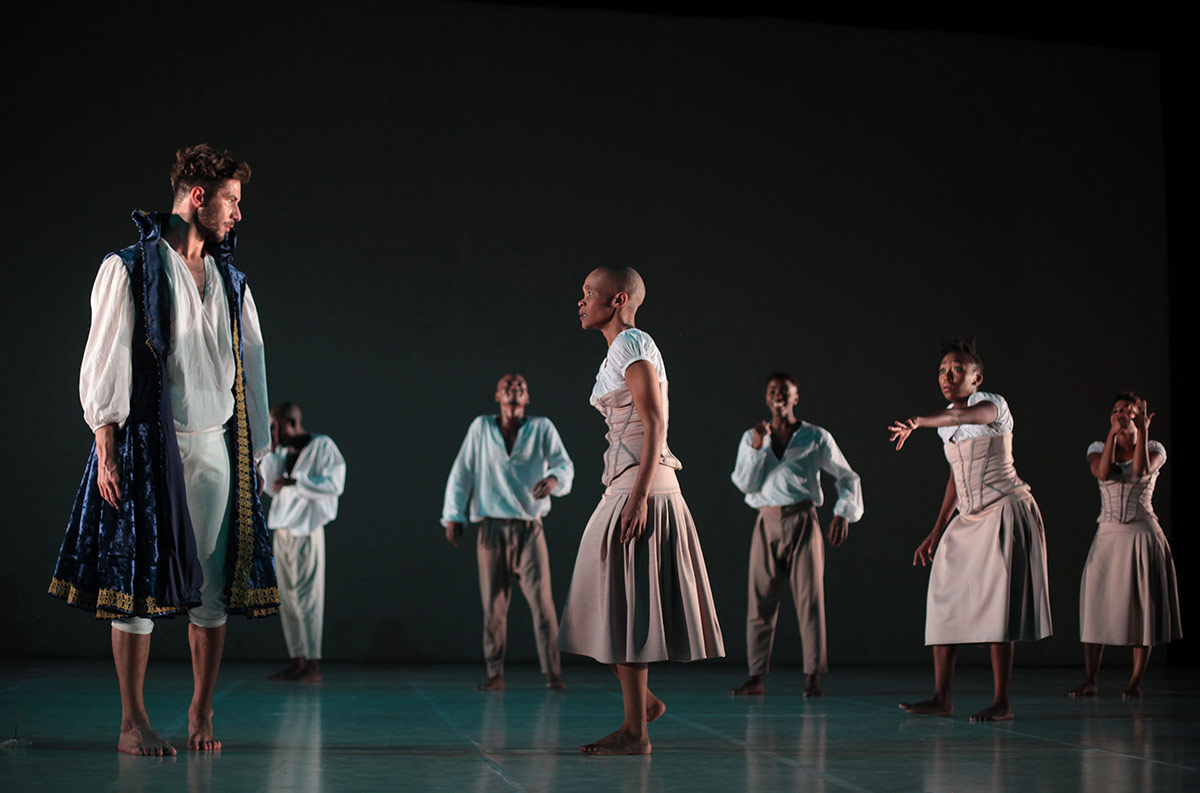
© John Hogg. (Click image for larger version)
It is a truly effective, blood-curdling scene, executed in Masilo’s compelling amalgamation of ballet, modern dance, and African dance styles. In interviews she has mentioned in particular her interest in the dances of the Tswana culture of South Africa. The low, à terre, arabesques of the Wilis in the original ballet are recognizable here, but the dancers’ stance, tipped forward, back arched, arms overhead, makes them look more like birds of prey than ghostly maidens. They are an androgynous band, a mix of men and women in red, bustled costumes. Most androgynous of all is the tall, lean dancer (Llewellyn Mnguni) in the role of Myrtha, the queen of this posse, depicted here as a South African faith healer, or Sangoma, complete with cow-hair flyswatter. Mnguni, who is in fact a man, wields that flyswatter like a whip; when he flays his victims, we can feel the sting on our own flesh.
In truth, Albrecht deserves little pity. He as quickly seduces Giselle as rejects her, violently casting her aside as soon as his official bride, a haughty Liyabuya Gongo, turns up. This leads to a scene in which Giselle is shunned, stripped naked, and left to die. Giselle – danced by Masilo herself – goes through a harrowing mad scene, screams, covers her breasts, convulses and trembles, and finally falls to the ground in a lump. Then follows the production’s other tour de force, a slow religious procession, traveling left to right, set to stirring traditional choral music. This is the true heart of Masilo’s ballet. It turns out that there is forgiveness, at least for Giselle.
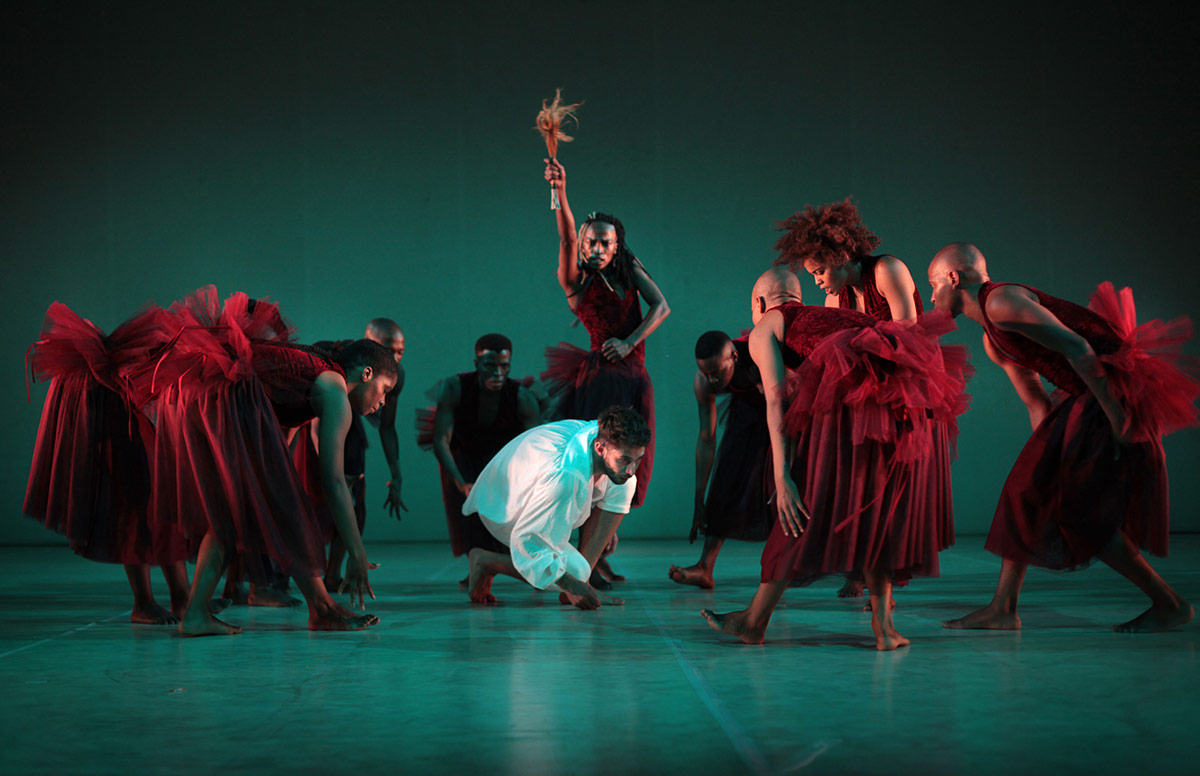
© John Hogg. (Click image for larger version)
These two scenes are what make this Giselle, which often feels choppy and unfocussed, into a powerful piece of dance theater. One more or less gets the rudiments of the story, but that is because one knows them already. A drawing by William Kentridge (a frequent Masilo collaborator) projected on the back of the stage depicts a marshy, rural idyll. The dancers are farm workers lorded over by an abusive foreman. People in brocaded finery show up, preening and posing for the peasants. One of them – the role of Bathilde is danced by Liyabuya Gongo – joins them in a lusty dance. Her movement language tips more toward ballet, executed in a brassy, showy style, with big kicks and exaggerated backbends. Everyone is barefoot, so even the ballet steps feel grounded – no delicate waifs here. The music, composed in a mish-mash of styles, with references to Adolph Adam’s original score, is by the South African composer Philip Miller.
If it’s exciting to see ballet steps stripped of their prettiness and combined with the fast footwork and lashing limbs of Masilo’s personal dance vocabulary, it is also true that, overall, there is little variety in the steps or general tone from one scene to the next. The dancing is vigorous and fast, and hangs rather loosely in Miller’s musical frame. With this lack of variety comes a certain emotional evenness of tone. It isn’t until the religious procession that the work’s power begins to take hold.
Which is a shame, since there is little in the first act to counterbalance the harrowing ending. It’s only in the dancing of Mnguni, as the terrifying spirit queen, that one senses the full potential of Masilo’s reimagining of this staple of the ballet repertoire.












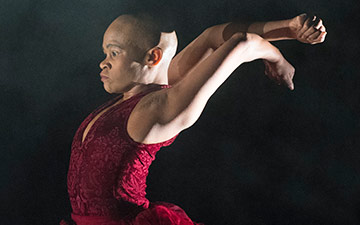

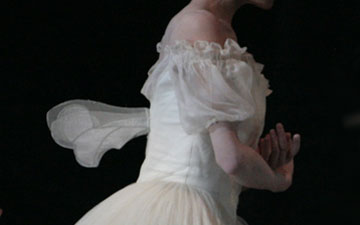
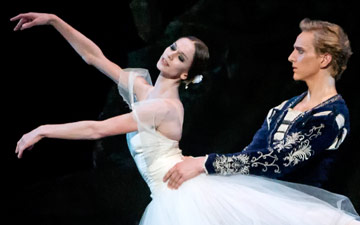

I loved this review, and I am eager to see this wild and exciting ballet!